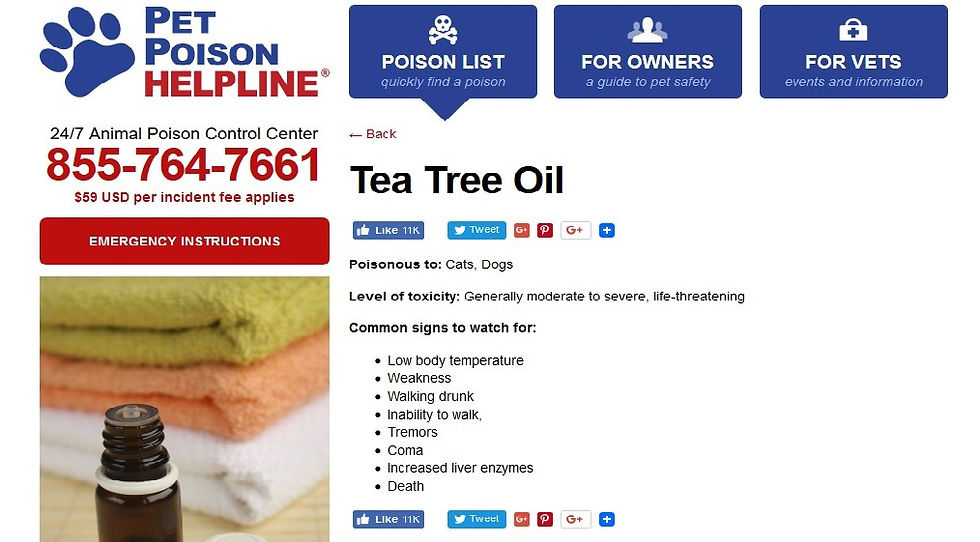TRADITIONAL VS HOLISTIC PET CARE: How to Interpret the Research to Learn the Truth
- tinypawssanctuary
- Oct 31, 2021
- 4 min read

Traditional (or conventional) medicine is what is practiced at most veterinary hospitals. The approach to treatment is normally pharmaceutical in nature. Holistic (or natural) medicine is practiced by veterinarians trained in one or more disciplines such as homeopathy, acupuncture, acupressure, herbal therapy, and aromatherapy.
Some complain traditional medicines focus too much on the illness and praise holistic medicine for its whole health approach. On the other hand, doctors of traditional medicine as being unscientific and unproven. The question is, who is correct? How do you know what has been tested and proven? Can both be useful as part of a whole-health approach?
It is important to understand the difference in anecdotal proof (testimonials for instance) and hard scientific, fact-based research based upon a well prepared and executed study. The studies can be repeated by another independent scientist, and with the same result. The components of an "empirical [or scientific] study article should include an abstract, an introduction, a discussion of the methodology employed, a statement of the results, a conclusion, and a list of references," according to The Center of Innovation in Research and Teaching.

Since 1796, holistic medicine has hundreds (if not thousands) of anecdotal stories offered as evidence. While the testimonials may agree, since 1796, almost no scientific based study has been done. Homeopaths claim that there are 299 studies published in 114 journals that prove that there are substantial health benefits that help a wide array of health conditions. There were two problems to this claim: First, the research method was seriously lacking. There were no proper components or methodology to the research. Second, not one study was published in respected medical or veterinary journals.
In 2010, a large study was conducted on the best evidence homeopathy had to offer. The evidence and studies were provided by the Cochrane Central Register. The study includes some of the 299 studies mentioned above. The study conclusion states that " [t]he findings of currently available Cochrane reviews of studies of homeopathy do not show that homeopathic medicines have effects beyond a placebo"
Nosodes are homeopathic substances that are created by diluting the secretions of a diseased person or animal with alcohol or distilled water until no molecules of the original substance remains. This substance is then put to the test in “provings” or homeopathic pathogenetic trials (HPTs). While there are some studies that attempt to support the efficacy of nosodes in veterinary medicine, there are other studies that show that "giving animals placebos can play active roles in influencing pet owners to believe in the effectiveness of the treatment when none exist."
To give you an example of homeopathic "research", below is the study to show the efficacy of using the blood of an individual who died of the AIDS virus to dilute into nosodes, or homeopathic remedy:
“We followed Jeremy Sherr's general proving methodology in this proving, however, individuals, timings and codes are not given. Additionally we recorded our experiences some minutes after beginning the proving. This is given at the beginning of the proving report. We got images (such as billowing clouds, popping seed pods, orange flowers, and responses to these images such as associated feelings, sensations or thoughts); feelings (such as joy, sadness, and their responses such as smiling or closing off); sensations (such as floating, burning, itching, and their responses such as restlessness or scratching); thoughts and concepts which in turn may evoke images, feelings and sensations. This then is our primary data. It would be in accordance with tradition to say that proving responses are headed up by an image at the top of a natural hierarchy which proceeds down the levels, through thoughts to feelings to sensations. But some provers vary here, for instance, by having a preponderance of sensation experiences, or feeling responses. This depends upon their innate personality structure, as would be described elementally as preponderances of Fire, Air, Water, Earth.”
This is homeopathic "research".

That isn't to say that there are not natural remedies that are helpful. There most certainly is. However this is a wake up call to assume that all natural remedies are safe or have well researched studies to back them up. Its also important to know that what is safe for humans, is not always safe for pets. For instance, tea tree oil is recommended by many natural medicine practitioners for pets, but unless given in the absolute correct dose, it can be harmful to pets. As a matter of fact, it is listed as a toxin on the Pet Poison Helpline.

It is important that we learn how to determine if treatments, both traditional and holistic, are of benefit to our animals, or have potential for danger. As pet parents, we need to ask questions, do research, and not assume that the information given (even by a professional) is correct. There may be biases that we are unaware of.
In some ways, it is as easy as using the internet to find our answers, but we have to know where our information comes from. For instance, a scientist working for a pet food company, may be biased to prove the claims made by his employer. Holistic websites such as Mercola.com are proponents of the holistic medicine, so may be biased toward a particular treatment. Research done with the financial support of a pharmaceutical companies may be biased and adjust the results to support that their drug cures or treats certain medical conditions, but If repeated by an independent researcher, the findings may be different.
So be the protector of your pet. Do the research to the best of your ability, and don't be afraid to ask your veterinarian to provide you with the information to be able to see the studies yourself. Its just one other thing we can do to be proactive pet parents.




Comments